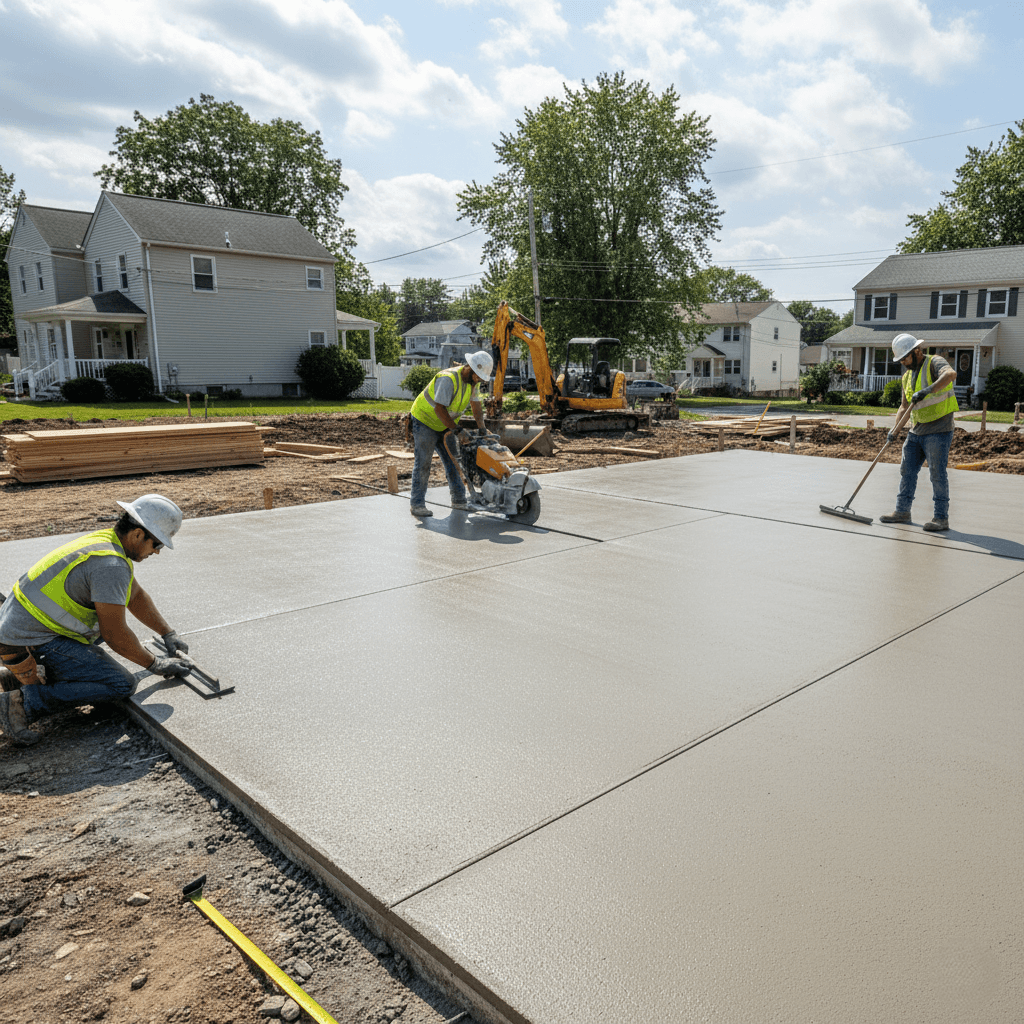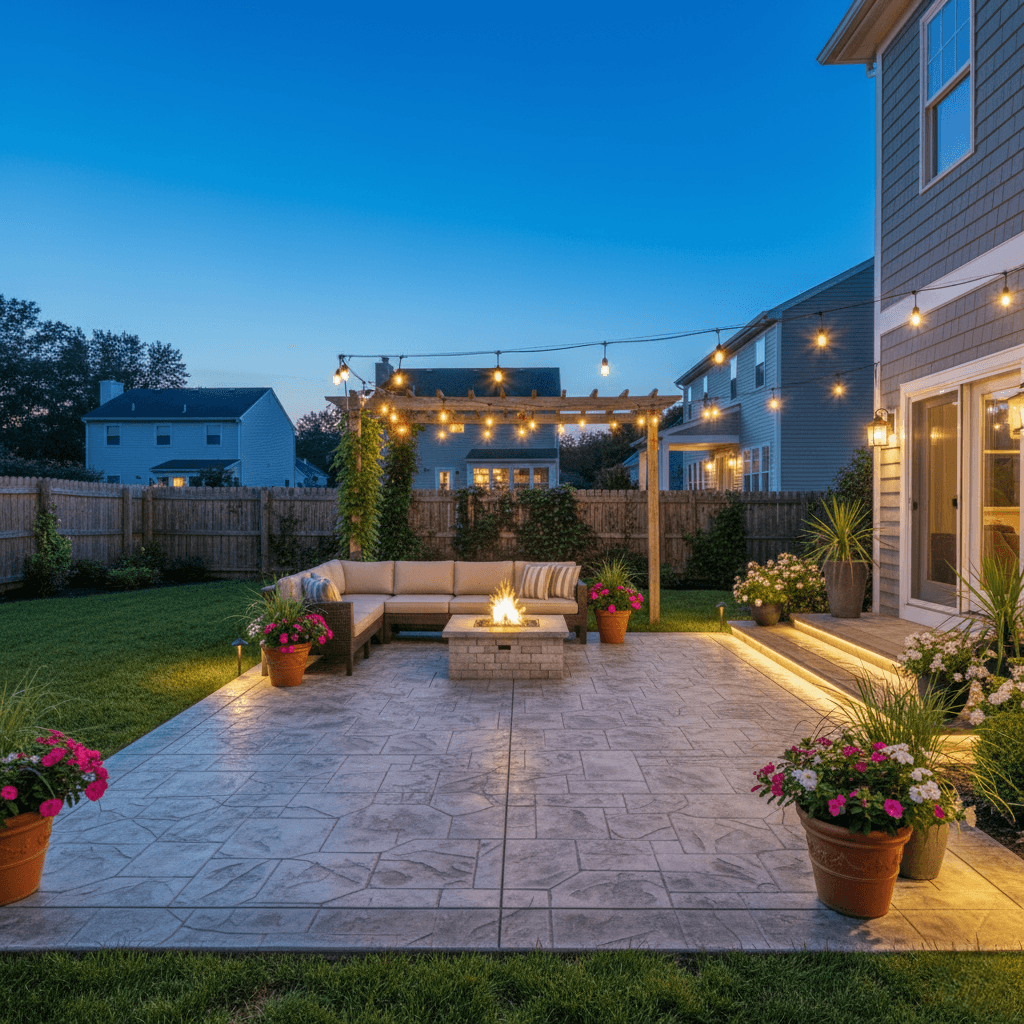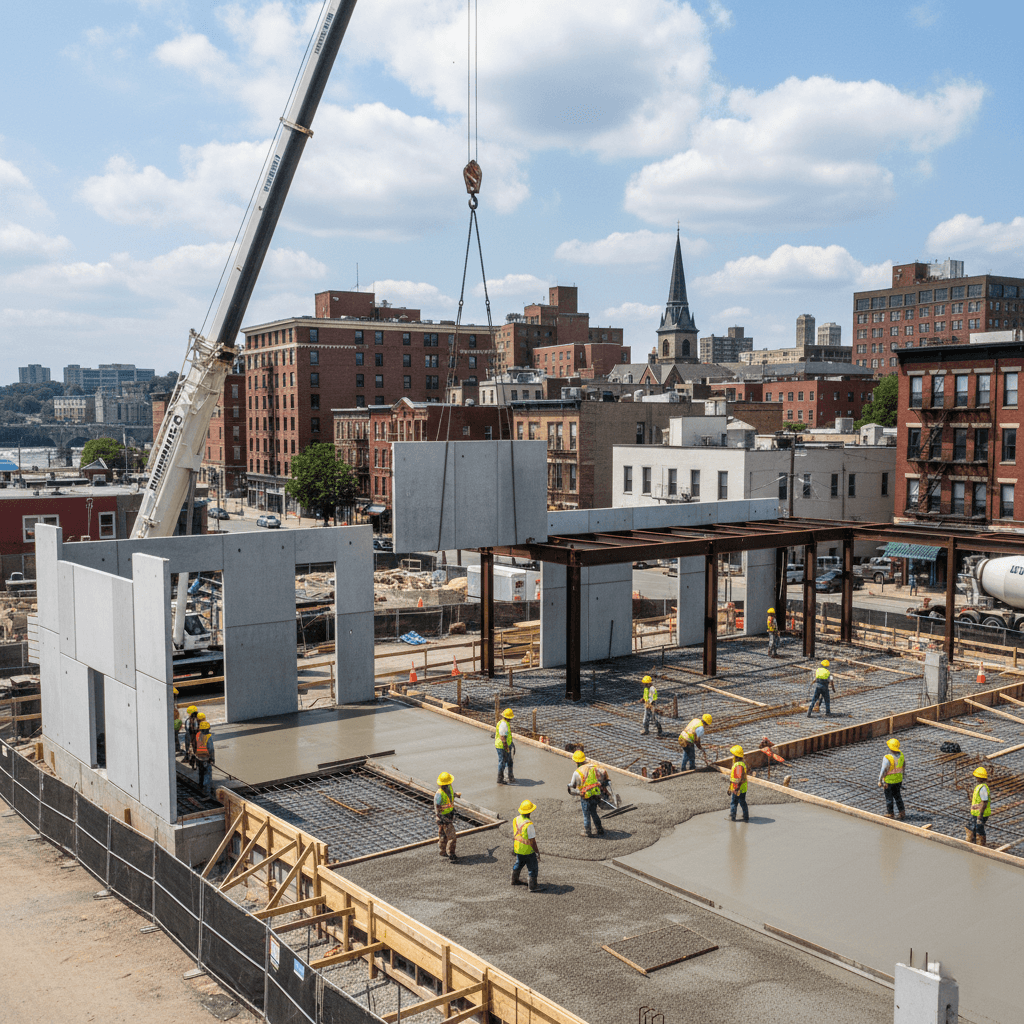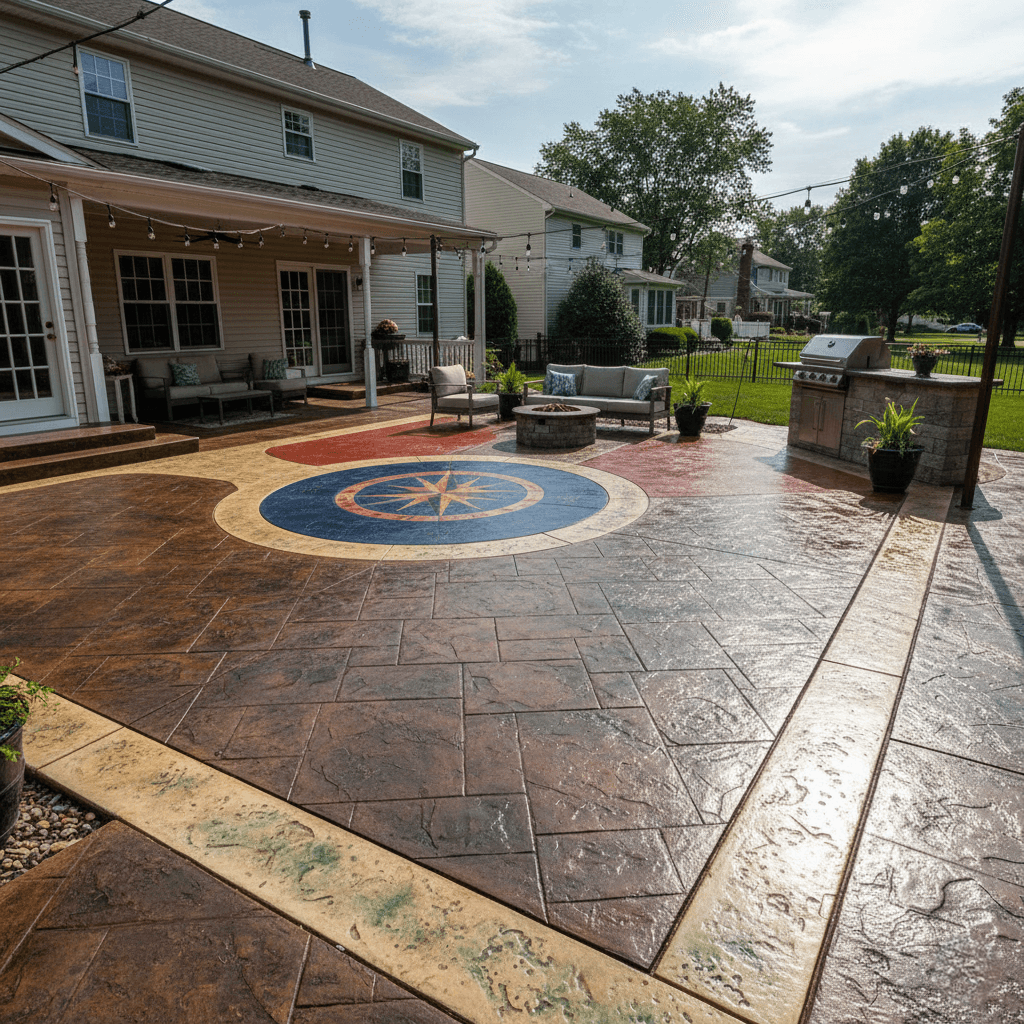
Step-by-Step Guide to Installing a Concrete Patio in Paterson, NJ
Concrete Patio Paterson
Installing a concrete patio in Paterson, NJ, requires careful planning and adherence to local building codes to ensure a successful project. The patio installation steps involve multiple phases from initial planning through final curing, typically spanning 2-3 weeks depending on weather conditions. Understanding Paterson’s specific permit requirements and construction regulations helps homeowners avoid costly delays and compliance issues. Professional installation ensures proper drainage, structural integrity, and long-term durability in New Jersey’s challenging climate. Moreover, following established procedures guarantees a beautiful outdoor living space that adds value to your property.

Planning and Permit Requirements
The first step in any concrete patio project involves obtaining proper permits from Paterson’s Construction Code Enforcing Agency at 111 Broadway. Paterson building permits require detailed project plans showing dimensions, setbacks from property lines, and drainage considerations. Additionally, projects exceeding 500 square feet may require grading plans and additional engineering review. Property owners must ensure all municipal taxes are current before permit approval, as verified by the Tax Collector’s office. Furthermore, consulting with neighbors about project timelines helps maintain good relationships during construction.
Design Planning and Site Assessment
A professional site assessment determines soil conditions, drainage patterns, and optimal patio placement relative to existing structures. The design process considers factors such as sun exposure, access to the home, and integration with existing landscaping near areas like Riverside or Totowa sections. Moreover, evaluating utility locations prevents conflicts during excavation phases of the patio construction process. Proper planning includes selecting appropriate concrete thickness, reinforcement options, and surface finishing techniques. Additionally, establishing clear project boundaries helps contractors provide accurate material estimates and timeline projections.
Site Preparation and Excavation
Site preparation begins with marking utility lines and establishing clear access routes for equipment and material delivery. The patio excavation depth typically ranges from 6 to 8 inches to accommodate base material and concrete thickness requirements. Professional concrete contractors remove existing vegetation, topsoil, and any organic materials that could compromise foundation stability. Moreover, proper grading establishes drainage slopes directing water away from the home and toward appropriate collection points. Additionally, contractors protect surrounding landscaping and structures during excavation activities.
Base Material Installation and Compaction
Quality-based material installation uses clean, angular stone or gravel to provide stable foundation support for the concrete patio. The base layer typically measures 4 inches thick and requires mechanical compaction in 2-inch lifts to achieve proper density. Professional contractors use plate compactors or vibratory rollers to ensure uniform compaction across the entire patio area. Furthermore, proper base preparation prevents settling and cracking that could compromise the finished surface. Installation of edge restraints and forms occurs after base compaction is complete and verified.
Forming and Reinforcement Installation
Professional forming techniques use straight lumber or metal forms to establish clean, precise edges for the concrete patio installation. Forms must be level, properly braced, and securely anchored to prevent movement during concrete placement. Additionally, contractors install expansion joints at strategic locations to control cracking and accommodate thermal movement. Reinforcement options include wire mesh, rebar, or fiber additives to enhance structural integrity and crack resistance. Moreover, proper reinforcement placement ensures adequate concrete cover and prevents corrosion issues over time.
Final Grade Verification and Drainage Setup
Final grade verification ensures proper slopes for drainage while maintaining desired finished elevations relative to existing structures. The concrete finishing techniques preparation includes checking all measurements, slopes, and reinforcement placement before concrete delivery. Professional contractors establish drainage systems, including French drains or surface channels, where necessary to manage water runoff. Furthermore, final inspection of forms and reinforcement prevents costly corrections during concrete placement. Additionally, contractors prepare all tools and equipment needed for efficient concrete placement and finishing operations.
Concrete Mixing and Placement
Professional concrete mixing ensures proper water-cement ratios and admixture dosages for optimal strength and workability. The concrete placement process requires coordination between delivery trucks and finishing crews to maintain consistent timing throughout the pour. Additionally, contractors monitor concrete temperature and slump to ensure compliance with specifications and weather conditions. Proper placement techniques include systematic pouring patterns that prevent cold joints and ensure uniform thickness. Moreover, immediate screeding and initial leveling occur during placement to establish proper surface elevations.
Surface Finishing and Texture Application
Surface finishing begins with screeding and floating to achieve smooth, level surfaces free from voids or imperfections. Professional contractors apply appropriate textures, including broom finishes, stamped patterns, or exposed aggregate, depending on design specifications. Additionally, timing becomes critical as finishing operations must occur within specific windows relative to concrete setting times. Proper edging and joint tooling create clean, professional appearances while controlling crack locations. Furthermore, final surface inspection ensures quality standards are met before initial curing begins.
Curing Process and Protection
The concrete curing process requires maintaining proper moisture and temperature conditions for optimal strength development over 28 days. Initial protection includes applying curing compounds or covering surfaces with plastic sheeting to prevent rapid moisture loss. Additionally, New Jersey’s variable weather conditions require protective measures against extreme temperatures, wind, and precipitation. Professional monitoring ensures curing progresses properly while maintaining surface quality throughout the critical early stages. Moreover, proper curing techniques significantly impact the long-term durability and appearance of the finished patio.
Access Restrictions and Timeline Management
Access restrictions begin immediately after concrete placement, with foot traffic prohibited for 24-48 hours, depending on weather conditions. Light pedestrian access typically becomes safe after 3-4 days when surface strength reaches adequate levels for careful walking. Additionally, full furniture placement and normal use should wait 7-14 days to prevent surface damage or impressions. Professional contractors provide specific guidelines about weight restrictions and care procedures during the initial curing period. Furthermore, patience during the curing process ensures optimal long-term performance and appearance.
Final Inspection and Quality Assurance
Final inspection procedures verify that all installation phases meet local building codes and project specifications before official completion. Paterson’s building inspectors review the finished outdoor living space to ensure compliance with permit requirements and safety standards. Professional contractors conduct comprehensive quality assessments, including thickness verification, surface finish evaluation, and drainage testing. Additionally, any necessary touch-ups or corrections are completed before final approval and warranty activation. Documentation of all phases provides homeowners with complete records for future maintenance and reference.
Maintenance Guidelines and Long-term Care
Professional maintenance guidelines help homeowners preserve their investment and extend patio lifespan through proper care procedures. Initial recommendations include avoiding de-icing chemicals during the first winter and protecting surfaces from heavy impacts or sharp objects. Regular cleaning with mild detergents and periodic sealing help protect against staining and weather damage in New Jersey’s climate. Moreover, early identification of minor issues prevents costly repairs and maintains optimal appearance over time. At Paterson Concrete Works, we provide comprehensive installation services for residential concrete installation projects, ensuring every concrete patio meets the highest standards of quality and durability while enhancing your outdoor living experience for years to come.


